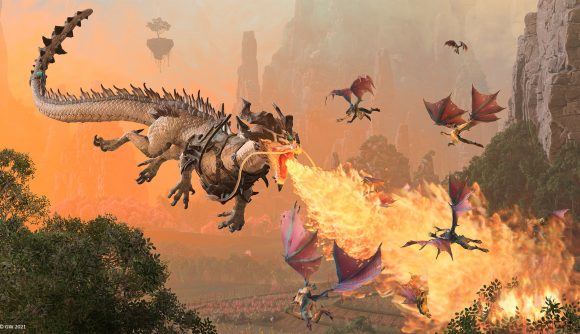Creative Assembly’s long-running real-time strategy saga Total War has long been regarded as one of the greatest video game franchises of all time, bringing the glory and brutality of large-scale warfare to players’ fingertips. Starting out as a purely historical series, Total War spanned the ages, expanding its mechanical offering as it went.
The first entry in this venerable series, Total War: Shogun, landed way back in 2000. This top-down battler combined epic skirmishes with in-depth empire management which immersed players in the ruthless warfare of feudal Japan, all of which was presented with (at the time) gorgeous and cutting-edge graphics.
The tactical options available in Shogun were a cut above what strategy players were used to, forcing them to consider all manner of engagement tactics as they planned out and executed their war effort. Players would have to consider the right time and location to engage enemies, positioning, and the troop types they would employ to best suit the scenario. All these options and more made players feel fully immersed in the vast campaign, but Creative Assembly were only just getting started.
Time marches on
As the series moved through the ages, the available tactics became increasingly diverse and advanced. Medieval: Total War took the battle to Europe, allowing players to command a cavalry of knights and archers in some of the period’s bloodiest battles. Rome: Total War, one of the best Total War games, added even more complexity to proceedings, as players travelled to the land of Caesar.
In 2016, Creative Assembly made their first foray into non-historical settings with Total War: Warhammer. For the first time, fans saw the lands of Warhammer recreated in full 3D with the stunning audiovisual flair that the studio was known for. The new variety of unit types added a level of strategic depth previously unseen in the Total War series.
The sequel built upon everything that made the original great, adding four new races, new unit types, a bigger map, and a more immersive story. More races were later added via DLC, before the Immortal Empires expansion combined both games into one enormous campaign. This paired with the robust multiplayer component has kept fans immersed in Total War: Warhammer 2 for years following its release.
Hammering it out
Now, the third and final Total War: Warhammer title presents fans with the ultimate fusion of strategy gameplay and tabletop lore, as the madness of Chaos spills out across the land. Taking players to the mysterious lands of Cathay and Kislev, Total War: Warhammer 3 is the most ambitious game Creative Assembly has devised yet. Featuring eight unique races, and a vast array of unit types, the tactical options are almost endless.
The map itself is massive, with each faction possessing different strategies of moving through it to achieve victory. The Tzeentch can manipulate peaceful settlements into turning to their side. The Khorne, by contrast, use brute force to achieve their goals, using their superior numbers to crash across territories in a wave of violence. The human factions, Cathay and Kislev, play much more like traditional Total War armies. Kislev use a balanced army and diplomatic tactics to work towards their aims, whereas the Grand Cathay utilise technological savvy and building skills to mount their advances.
Then there are the Daemons of Chaos, encompassing units from all four Chaos gods – Khorne, Tzeentch, Slaanesh, and Nurgle – whose unpredictable and unbridled power can throw a wrench in the plans of any foe they come up against. For players who want to fully indulge in the evil of Chaos, play with Ogre Kingdoms – festering, greedy armies who rule through brutality and gluttony. They’re also a hell of a lot of fun.
Tactical Supremacy
Many new strategic wrinkles have been introduced to Warhammer 3’s campaign, meaning that players must always be thinking a few steps ahead of their current position. Rifts into the Realm of Chaos frequently appear and you’ll need to send a faction leader through these portals to battle through the Chaos gods’ domain. Fail to quell the Chaos within and you could lose your faction leader, and risk further corruption spreading out into your territories.
With the return of the Immortal Empires DLC, you can also bring in all of the fantastic units that were available in the previous two games across single-player and multiplayer modes. With the latest patch, you don’t even need to have owned the previous two games to get access to all this fabulous content.





